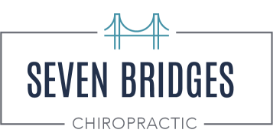Ever cracked your knuckles or stretched your back just to hear that satisfying “pop”? Chiropractors call that sound “joint cavitation,” and while it may feel great, what’s actually happening inside your joints? Let’s break it down.
What Causes the “Pop”?
Joints contain synovial fluid, which lubricates and cushions movement. When a joint is stretched, the pressure within decreases, allowing dissolved gases (mostly nitrogen) to form a cavity, which then rapidly collapses, creating the characteristic cracking sound. A study published in PLOS ONE used real-time MRI to confirm that joint cracking is caused by cavity formation rather than bubble collapse (1).
Common Myths About Joint Cracking
❌ “Cracking your joints causes arthritis.” Research, including a study in The Journal of the American Board of Family Medicine, found no link between habitual knuckle cracking and arthritis development (2). Arthritis is primarily caused by joint wear, inflammation, and other underlying conditions. Joint wear can come from use and abuse, improper posture, micro or major traumas, and many other reasons.
❌ “If there’s no pop, the adjustment didn’t work.” Adjustments improve joint mobility and reduce restrictions, whether or not a sound occurs. The goal of chiropractic care is to restore proper movement, not just produce a noise. We get addicted to the “pop” because it is validating, but there is no valid research that it is necessary to get relief! 😊_
Surprising Facts About Joint Cavitation
✅ Cracking your joints can boost happiness. Studies show a slight increase in beta-endorphins (feel-good chemicals) after a chiropractic adjustment (3).
✅ The “air” in the pop is mostly nitrogen. Research using MRI confirms that nitrogen rushes into the joint as it cavitates
✅ You can’t re-crack a joint immediately. It takes around 20 minutes for gases to reaccumulate before another cavitation can occur (4).
❌ It’s not safe to crack your own neck. Overstretching your neck can lead to ligament instability and hypermobility. Chiropractors use precise techniques to ensure safe and effective adjustments which was shown in research. (5).
What Chiropractors Want You to Know
Chiropractic adjustments aren’t just about the “pop”—they help restore movement, relieve pressure, and support overall joint function. If you love that satisfying sound, let a professional do it safely!
Got questions? Drop them in the comments, or visit a Jacksonville Chiropractor to experience an adjustment for yourself.
Sources:
(1) Kawchuk, G. N., et al. (2015). Real-Time Visualization of Joint Cavitation. PLOS ONE.
(2) Castellanos, J., & Axelrod, D. (1990). Effect of habitual knuckle cracking on hand function. The Journal of the American Board of Family Medicine
(3) Dishman, J. D., & Burke, J. (2003) Spinal manipulation and beta-endorphin levels. Journal of Manipulative and Physiological Therapeutics
(4) Bakker, M., et al. (2017). The refractory period of joint cavitation. Clinical Biomechanics.
(5) Herzog, W., et al. (2012). Biomechanical analysis of spinal manipulation. Spine Journal.
